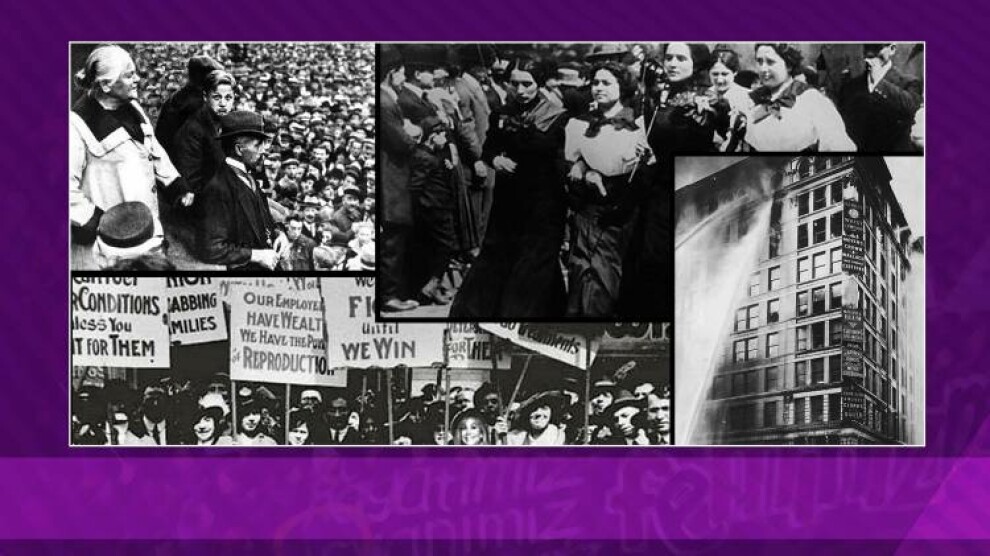Women’s struggles in history -II-

The women's resistance becomes hope while dozens of women are killed every day, they are subjected to many forms of violence everywhere but the states and judiciary protect this system. We go through a process in which we have faced many consequences of the severe damage caused by capitalist exploitation on the lives of women while the mass resistances led by women have made history.
ZEYNEP AKGÜL
Ankara- On March 8, 1857, 40 thousand garment workers of a factory staged a strike demanding better working conditions in New York City, USA. 129 women died in a fire (Triangle Shirtwaist Factory fire) started in the factory because the doors to the stairwells and exits were locked. More than 10 thousand people attended the funeral of the workers.
An international Women's Day was proposed at a conference in Copenhagen in 1910, held by socialist organizations from around the world. Clara Zetkin, a German socialist, suggested the idea to commemorate the strike of garment workers in the United States. The proposal received unanimous approval by over 100 women from 17 countries.
Clara's idea for an International Women's Day had no fixed date. After women gained suffrage in Soviet Russia in 1917, March 8 became a national holiday there. The United Nations began celebrating International Women's Day in the International Women's Year, 1975. In 1977, the United Nations General Assembly invited member states to proclaim March 8 as the UN Day for women's rights and world peace.
The First International Conference of Socialist Women
The Second International was an organization of socialist and labor parties, formed on 14 July 1889 at a Paris meeting in which delegations from twenty countries participated. At the congress, women’s lives in the factories, the evaluation and unification of local struggles, the international organization of socialist women, and how they could overcome the problems women faced were discussed. Clara Zetkin gave a much-acclaimed speech in which she demanded the integration of women workers into the Labor Movement.
The congress was an important turning point in the organization of the women's struggle. Clara Zetkin also took an active part in forming unions for women. She helped to develop the social-democratic women's movement in Germany. From 1891 to 1917, she edited the SPD women's newspaper Die Gleichheit (Equality). Equality Newspaper played a great role in the organization of the socialist women's movement. Zetkin's aim was to organize the international socialist women's movement.
The First International Conference of Socialist Women was held in Stuttgart in 1907. 56 female delegates from 15 countries participated in the conference. The Conference adopted a resolution on women's right to vote (suffrage). Women discussed how to struggle for their right to vote. Aleksandra Kollantai was the only delegate representing Russia. At this conference, it was decided to establish a Women’s International Secretariat with Clara Zetkin from Germany as the person in charge.
The Second International Socialist Women's Conference
The Second International Socialist Women's Conference was held in Copenhagen in 1910. One hundred delegates attended from seventeen countries. Women discussed women's suffrage at the conference. Aleksandra Kollantai attended the conference along with Clara Zetkin. An international Women's Day was proposed at the conference. A proposal was suggested that March 8 should be declared as International Women's Day and celebrated every year. The proposal received unanimous approval by over 100 women from 17 countries. Thus, March 8 was adopted as the International Women's Day.
Since then, International Women’s Day has been celebrated on March 8.
Tomorrow: 100-year-old resistance from the West to the East
